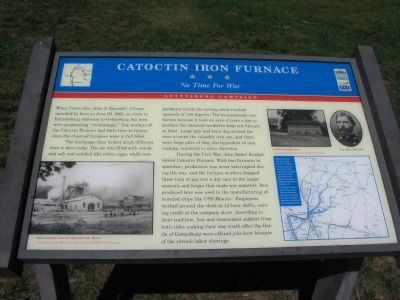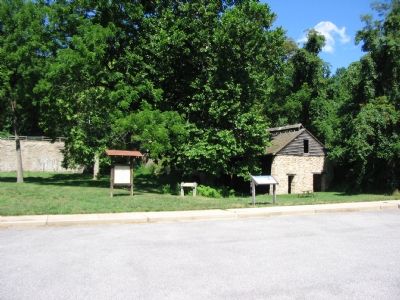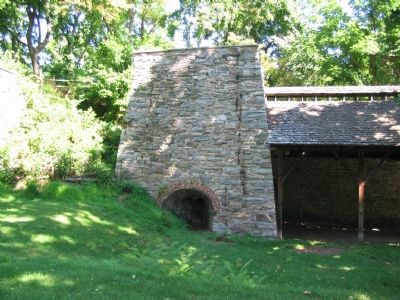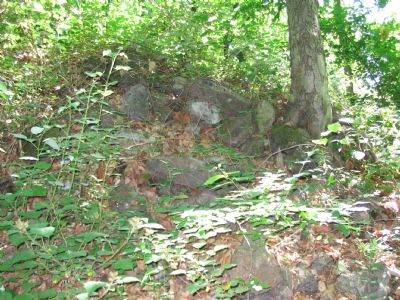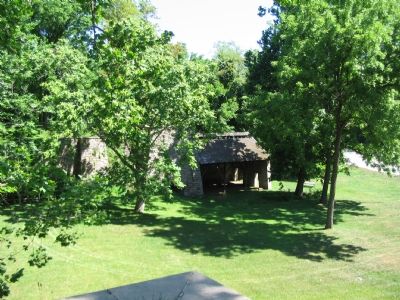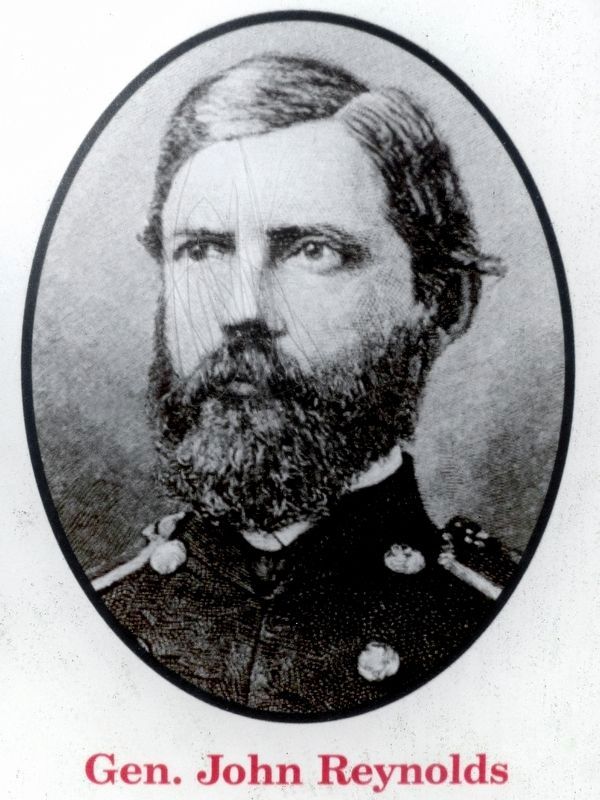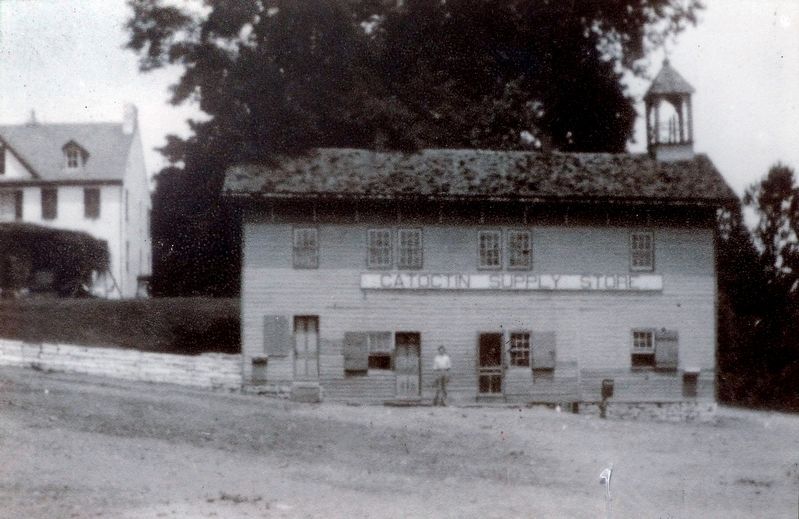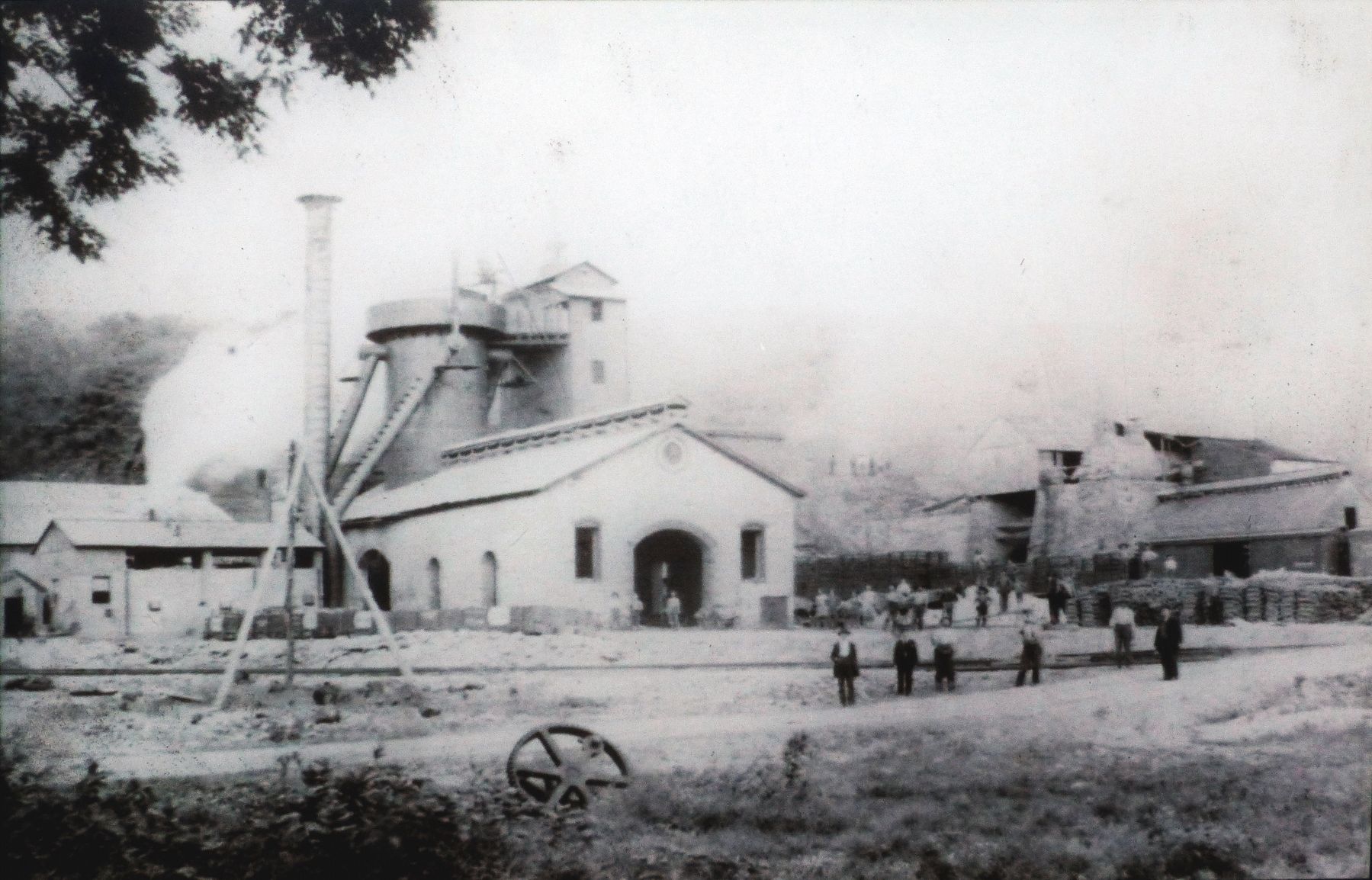Near Thurmont in Frederick County, Maryland — The American Northeast (Mid-Atlantic)
Catoctin Iron Furnace
No Time For War
— Gettysburg Campaign —
When Union Gen. John F. Reynolds’ I Corps marched by here on June 29, 1863, en route to Emmitsburg and soon to Gettysburg, his men were progressing “swimmingly.” The workers of the Catoctin Furnace had little time to notice, since the charcoal furnaces were in full blast.
The landscape then looked much different than it does today. The air was filled with smoke and ash and smelled like rotten eggs, while temperatures inside the casting sheds reached upwards of 120 degrees. The mountainside was barren because it took an acre of trees a day to produce the charcoal needed to keep one furnace in blast. Large pits had been dug around the area to mine the valuable iron ore, and there were large piles of slag, the byproduct of iron making, scattered in every direction.
During the Civil War, John Baker Kunkel owned Catoctin Furnace. With two furnaces in operation, production was never interrupted during the war, and the furnace workers shipped three tons of pig iron a day east to the larger arsenals and forges that made war material. Iron produced here was used in the manufacturing of ironclad ships like USS Monitor. Employees worked around the clock in 12-hour shifts, earning credit at the company store. According to local tradition, lost and disoriented soldiers from both sides making their way south after the Battle of Gettysburg were offered jobs here because of the chronic labor shortage.
Topics and series. This historical marker is listed in these topic lists: Industry & Commerce • War, US Civil. In addition, it is included in the Appalachian Iron Furnaces, and the Maryland Civil War Trails series lists. A significant historical month for this entry is June 1863.
Location. 39° 34.87′ N, 77° 26.047′ W. Marker is near Thurmont, Maryland, in Frederick County. Marker is at the intersection of Blacks Mill Road and Catoctin Furnace Road (Maryland Route 806) on Blacks Mill Road. The furnace stands inside an extension of Cunningham Falls State Park. Touch for map. Marker is in this post office area: Thurmont MD 21788, United States of America. Touch for directions.
Other nearby markers. At least 8 other markers are within walking distance of this marker. Catoctin Furnace African American Cemetery Interpretive Trail (here, next to this marker); Dirty and Dangerous (here, next to this marker); a different marker also named Catoctin Iron Furnace (a few steps from this marker); Catoctin Furnace (a few steps from this marker); The Watchful Eye (a few steps from this marker); A Diverse and Skilled Workforce (within shouting distance of this marker); Ironmaster's Mansion (about 300 feet away, measured in a direct line); Ruins of the Ironmaster’s House (about 400 feet away). Touch for a list and map of all markers in Thurmont.
More about this marker. The marker displays a 19th Century photo of Catoctin Furnace, courtesy of the Maryland Department of Natural Resources.
A picture of the Catoctin supply store was furnished by the Thurmont Historical Society.
The marker also features a picture of Gen. John Reynolds and a map of the Gettysburg campaign with the caption, "Position of the Union Army of the Potomac June 29, 1863 (midday). New Union commander Gen. George G. Meade orders his army north with two objectives: Engage the Confederate army under the best possible conditions while protecting Washington D.C. Learning that the Union army was close and getting closer, Confederate Gen. Robert E. Lee orders his army to consolidate somewhere near the Maryland-Pennsylvania border."
Related markers. Click here for a list of markers that are related to this marker.
Also see . . .
1. National Park Service site on Catoctin Furnace. (Submitted on July 3, 2007, by Craig Swain of Leesburg, Virginia.)
2. Video Tour of Catoctin Furnace. (Submitted on July 3, 2007, by Craig Swain of Leesburg, Virginia.)
Credits. This page was last revised on March 3, 2023. It was originally submitted on July 3, 2007, by Craig Swain of Leesburg, Virginia. This page has been viewed 3,538 times since then and 32 times this year. Last updated on July 9, 2017, by William Glahn of Winchester, Virginia. Photos: 1, 2, 3, 4, 5. submitted on July 3, 2007, by Craig Swain of Leesburg, Virginia. 6, 7, 8. submitted on October 20, 2021, by Allen C. Browne of Silver Spring, Maryland. • Bill Pfingsten was the editor who published this page.
